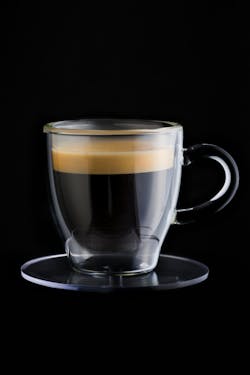Millennials Drive Consumer Shift To Espresso-Based Beverages
Consumers are moving to espresso-based beverages and it’s the younger generations driving this shift, according to new research published by the National Coffee Association (NCA). In its recent National Coffee Drinking Trends report, the NCA found that daily consumption of espresso-based beverages has tripled since 2008.
Move to mochas
In the last eight years, past-day consumption of coffee beverages labeled “gourmet” soared from just 13 percent to 36 percent among consumers 18 to 24. For older Millennials — those ages 25 to 39 — gourmet coffee beverage consumption increased from 19 percent in 2008 to 41 percent this year. This group is also most likely to drink gourmet coffee beverages weekly.
Espresso-based beverage consumption tends to skew younger, with 44 percent of 18 to 24 year olds and 50 percent of 25 to 39 year olds drinking espresso-based beverages within the last week. This compares to just 26 percent of 40 to 59 year olds and 19 percent of consumers 60 and above. For operators, that means offering brewers and coffee options that fit this growing demand for gourmet beverages.
Millennials and younger consumers aren’t just driving a trend to gourmet coffee beverages — coffee consumption in general is up for younger generations. Daily coffee consumption among 18 to 24 year olds has doubled since 2000, from 25 percent to nearly 50 percent. For those 25 to 39, daily coffee consumption increased from 42 percent in 2000 to 60 percent in 2016.
The study found that consumers in general are more apt to explore new coffee types. Throughout the last year, 8 percent of survey respondents said they tried flat white while 10 percent tried nitrogen carbonated coffee and 15 percent claim to have tried cold brew coffee. Many OCS operators have recognized this trend and have responded with bottled or cold brew keg offerings in locations.
Single-cup continues to grow
Single-cup brewing is still a growing coffee preparation method both at home and at work. In 2016, 33 percent of those who have a workplace coffee area have a single-cup machine, according to NCA data. This compares to just 30 percent in 2014-2015. This could be due to consumer preferences for customization and the ‘premium’ coffee options single-cup offers.
While single-cup brewing methods are increasing, drip coffee makers are in decline. In the workplace, drip coffee maker placement dropped from 59 percent in 2015 to 55 percent in 2016.
Good news for operators is that coffee preparation out-of-home is up in 2016, with 34 percent of consumers drinking the beverage away-from-home compared to 30 percent in 2015. Like gourmet beverage consumption, out-of-home coffee consumption is driven by younger consumers. In fact, around 50 percent of consumers ages 18 to 39 who drank coffee yesterday drank it out-of-home.
Appeal to the masses
As more Millennials and younger generations of employees enter the workforce, it will be up to operators to offer an office coffee service solution that fits consumption trends of each generation. While Millennials are shown to prefer gourmet options, operators cannot dismiss traditional coffee. This could mean offering a bean-to-cup or other single-cup option so the consumer can choose between a traditional cup of joe or an espresso-based option.
Coffee additives
The NCA is witnessing new niche coffee whitening options driven by younger consumers. Although a small number, some past-day coffee drinkers are adding non-dairy milk to their coffee, such as almond, coconut and soy options. Specifically, 7 percent of consumers 18 to 24 and 9 percent of coffee drinkers 25 to 39 added non-dairy milk to their past-day coffee. Non-dairy milk options may be a way to gain a competitive advantage.
Methodology
The National Coffee Association conducted the National Coffee Drinking Trends Report in January 2016.
The study engages a nationally representative sample of about 3,000 people 18 and older. Respondents are selected from an online panel with ethnic breakouts aligned proportionately with the makeup of the U.S. population. Respondents complete the survey online in English or Spanish at their choosing.
(in a sidebar next the first paragraph of the "move to mocha" subhead: The NCA labels gourmet coffee beverages as espresso-based beverages, iced/frozen blended coffee and traditional coffee brewed from premium beans.)

Adrienne Klein | Contributing Editor
Adrienne Zimmer Klein is a freelance writer with a background in the vending, micro market and office coffee service industry. She worked as an associate editor and managing editor at Automatic Merchandiser and VendingMarketWatch.com from 2013 until 2017. She is a regular contributing writer at Automatic Merchandiser.





